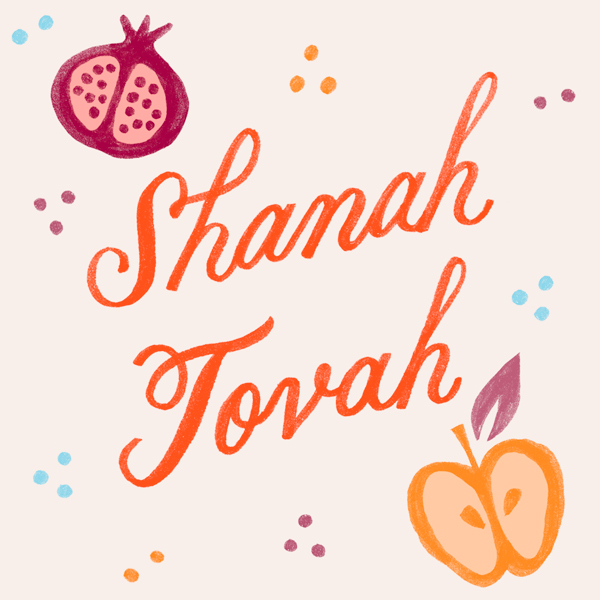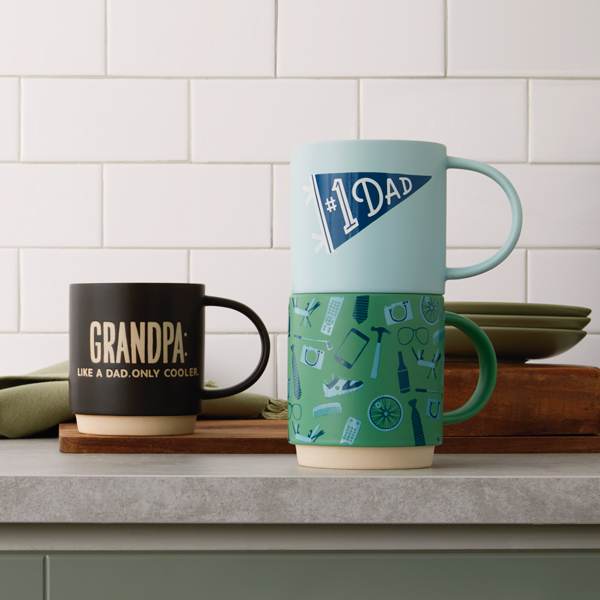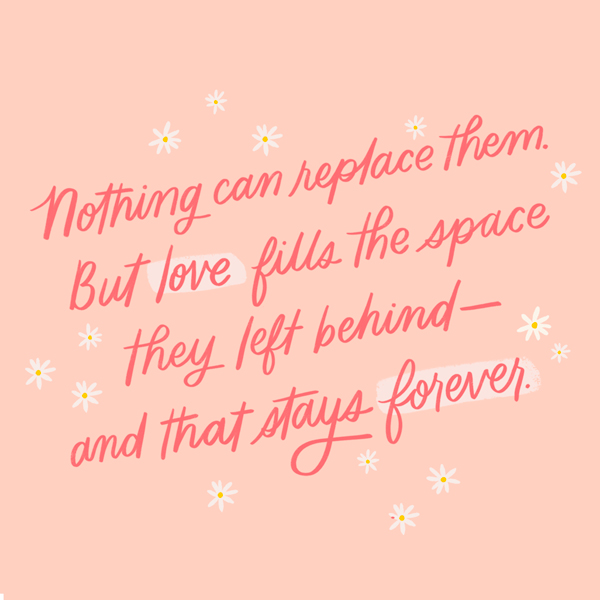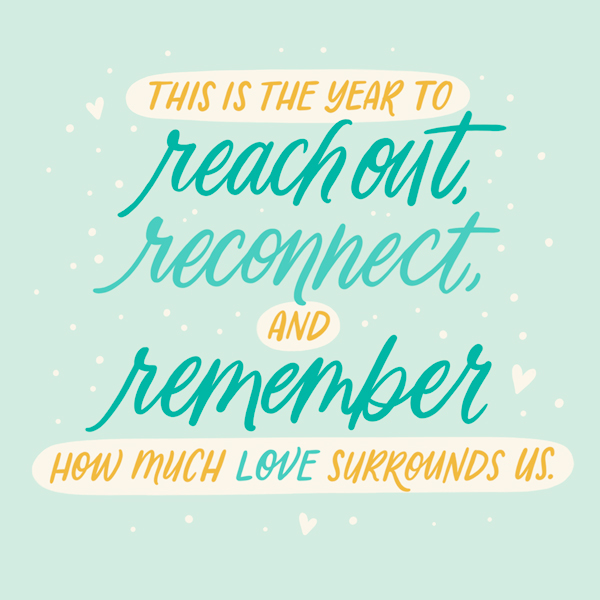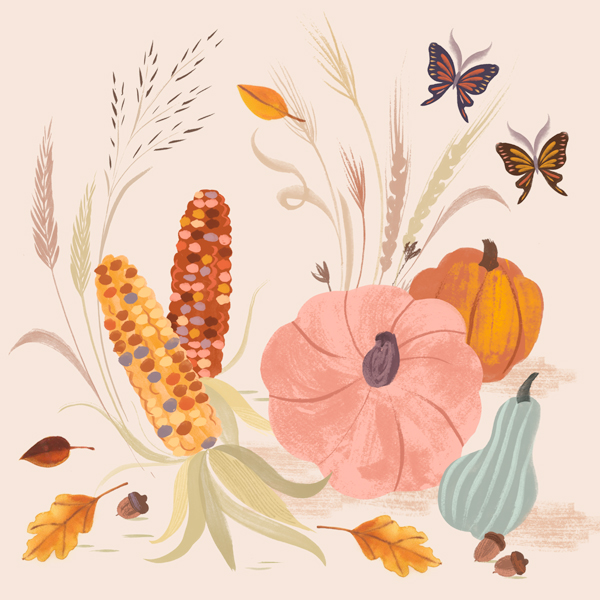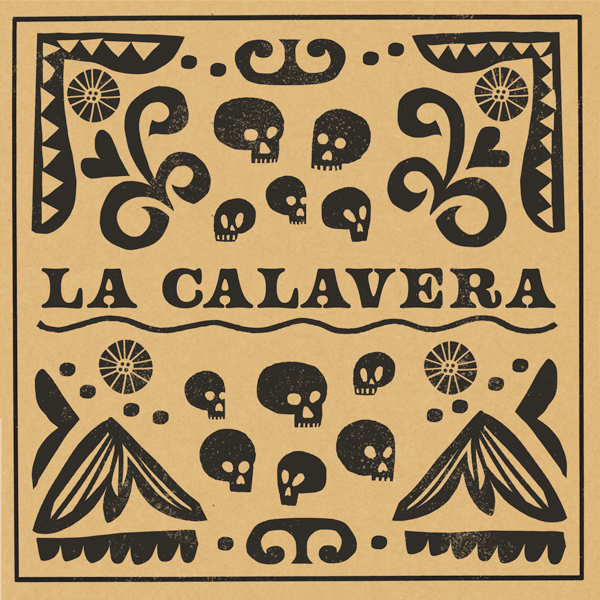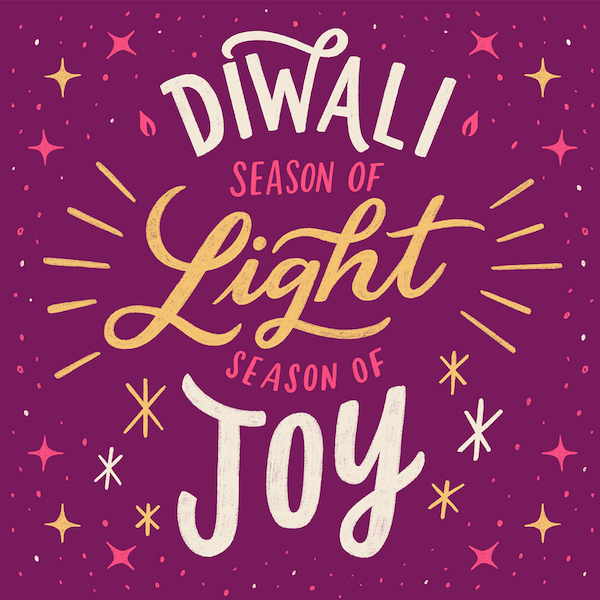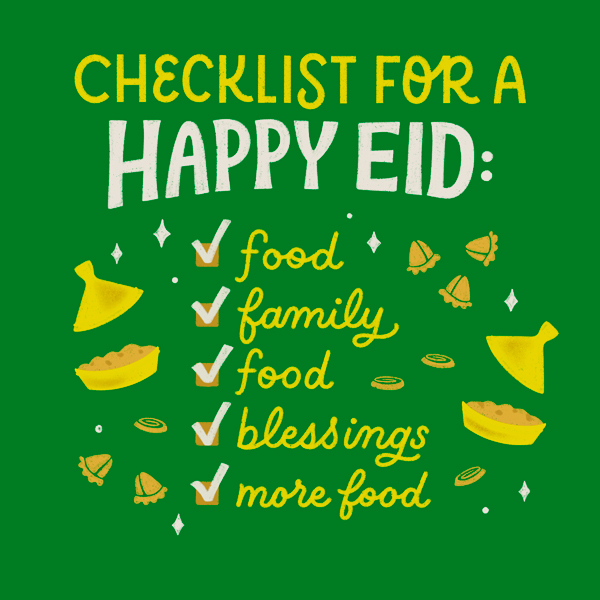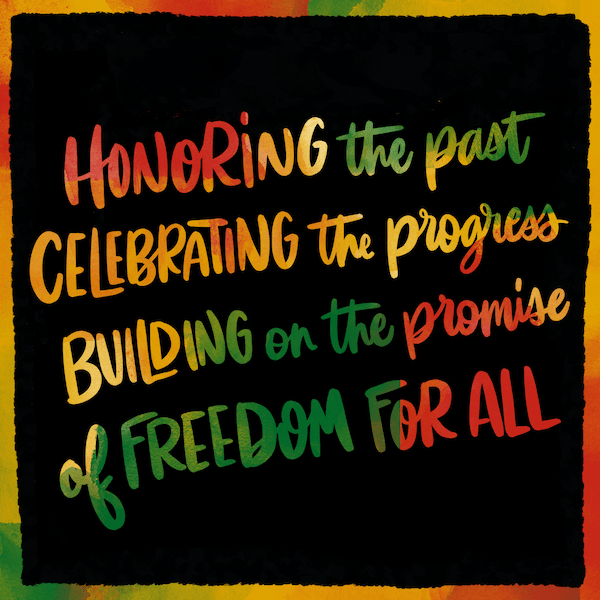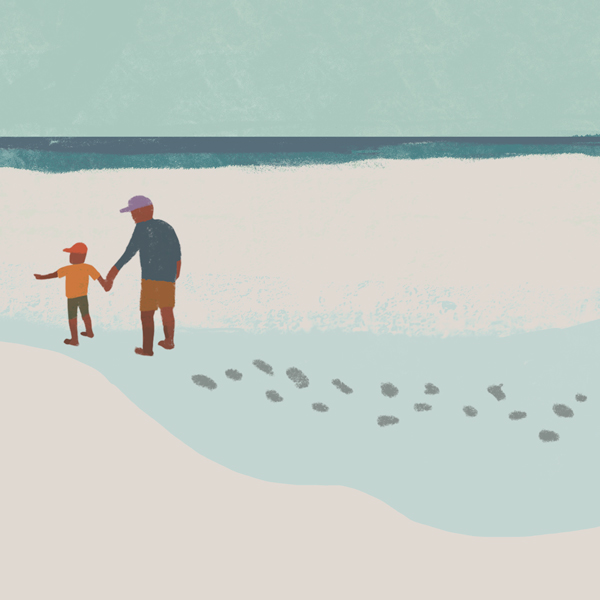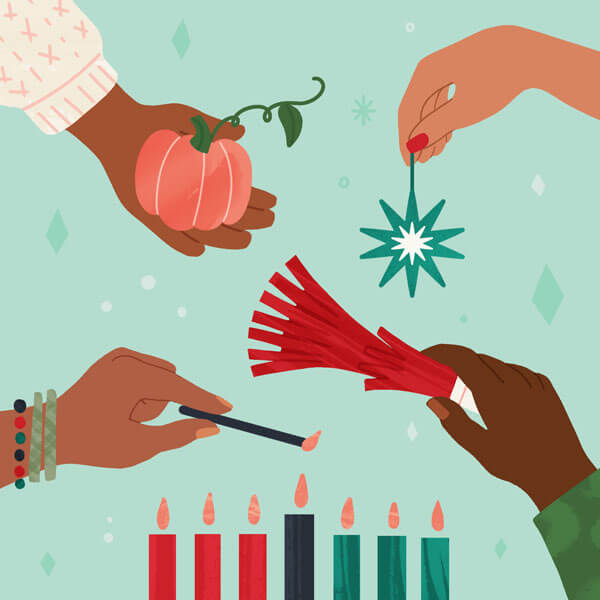Día de Muertos: A celebration of life and love
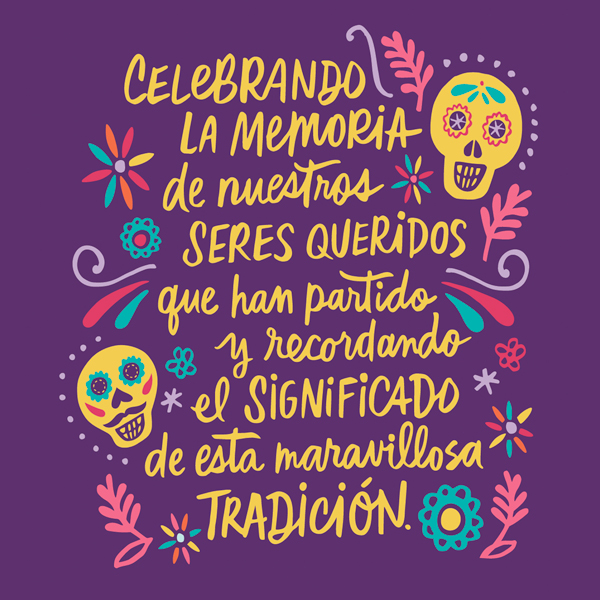
Día de Muertos, Day of the Dead, is a holiday originally celebrated in the southern and central parts of Mexico and increasingly observed in the United States. It combines pre-Hispanic rituals that honor deceased relatives with the Catholic celebrations of All Saints’ Day and All Souls’ Day.
It is said that at midnight on October 31, heaven opens its gates and the spirits of those who have passed can return for a day to visit their loved ones. The holiday is really two days: Día de Todos los Santos (or Angelitos, meaning little angels) is observed on November 1 to honor children who have died. Día de Muertos on November 2 celebrates the memories of deceased adults.
Inspired? Create and share by tagging @hallmarkstores.
Day of the Dead Traditions
Ofrendas, or offerings, are a central theme of the holiday. Families create altars to display the ofrendas and to welcome departed loved ones into their homes. Traditionally, altars with multiple levels represent heaven and earth or heaven, purgatory and earth. And it is said the fruit, fluttering papel picado (brightly colored cut tissue paper banners), candles and cup of water represent the four elements: earth, wind, fire and water.
An altar built in a home might be small and simple, created on a side table with a just a photograph or candle. More often, they also include the loved ones’ favorite foods and important objects and might even feature photos and belongings from many family members and friends, taking over a whole table. Children sometimes learn the tradition by making their own miniature altars in shoeboxes.
Other Day of the Dead decorations include papel picado, cempasúchil (orange marigolds), copal (incense) and calaveras (skulls made of sugar and decorated with colorful frosting). A cup of water, dish of salt and pan de muertos (a sweet bread for the dead) symbolically refresh the visitors and relieve their hunger.
You might also find altars at schools, parks or businesses. They’re created to honor not only family members and friends, but also historical figures, celebrities or those lost in disasters or tragedies.
Celebrating Day of the Dead
On Día de Muertos families visit graveyards, but it’s not a somber occasion. They take a feast, clean and decorate tombs, light candles, and sing and play games. Children learn that death is part of life and that their deceased relatives would want to see them happy. Even the calacas—decorative paper-mache skeletons—are shown having fun.
Some cities celebrate with parades, processions and street parties. Different regions mark the holiday in different ways, but one thing is true everywhere: Day of the Dead is a time to gather with loved ones past and present, tell family stories and celebrate their relationships.
Remembering Loved Ones on Día de Muertos
Día de Muertos is a deeply personal holiday. The process of creating an ofrenda is a chance to remember the details that made the people you love—and your relationships—unique. Celebrations are full of tears and laughter, stories and songs, quiet moments and joyful outbursts. Day of the Dead is ultimately about life and love and the connections that keep people together even after death.
Shop This Idea
You may also like
See more-
Winter What is Lunar New Year?: Shining a light on a celebration shared by billions
Lunar New Year is celebrated by an estimated 2 billion people around the world. It’s a holiday that marks the arrival...
-
Hanukkah What Is Hanukkah?: Sharing in the spirit of a joyous Jewish holiday
Hanukkah is a time for celebrations that thrive in food, family, friends and faith. But with Jewish culture being so ...
-
Fall What is Rosh Hashanah?
Jewish New Year is the most important and widely celebrated of all Jewish holidays. The origin of Jewish New Year ...
-
Arts, Crafts & DIY Día de Muertos crafts to celebrate with family
The sweet smell of pan de muerto baking, colorful decorations and pictures selected with care, special memories being...
-
Father's Day An ode to dad mugs: Musings on missing out on one of the best Father's Day gifts
I think coffee is gross. I think tea tastes like water dreaming about what it would feel like to have flavor. I only ...
-
Mother's Day Mother's Day without Mom: Remembering lost loved ones with new traditions
This Mother’s Day will be my third without my mom. She died just before Thanksgiving and Christmas in 2020, which mad...
-
Mother's Day Mother’s Day traditions to start this year
There are infinite ways to celebrate your special lady on Mother’s Day: A self-care spa outing, dinner at her favorit...
-
New Year's Why New Year’s is the Perfect Time to Update Your Address Book
You know those little lifestyle or organization tips that you hear about and you’re like, “That’s so simple—why didn’...
-
New Year's Guilt-Free New Year's Resolutions
“New Year’s resolutions.” To some, those words are filled with pure possibility...an invitation to start anew, comple...
-
New Year's New Year's Resolution Ideas for Groups
New Year’s resolutions are pretty lonely deals. It’s just you and that thing you have to live up to. Ack! No wonde...
-
Christmas A Christmas tribute: meaningful ways to weave memories of lost loved ones into new holiday traditions
For many of us, Christmas is the time of year when we miss our lost loved ones the most. Finding ways to memoriali...
-
Card Ideas Make Your Christmas Letter Memorable with a Video Greeting
Just about everyone loves a good holiday tradition. Decorating the tree? Yes. Eating piles of Christmas treats? Oh, h...
-
Thanksgiving The History of Thanksgiving and Alternative Ideas for Celebrating Gratitude
Many of us in the United States have celebrated Thanksgiving through the years without knowing its origins, perhaps h...
-
Fall How to write literary calaveras for Día de Muertos
You’ve made your ofrenda (altar), hung your papel picado (paper banners), and decorated your calaveras de azúcar (sug...
-
Fall What Is Diwali?: Five Days of Celebrating Peace and Light
Diwali, also called Deepavali, is known as the Festival of Lights. Filled with joy and incredibly family-oriented, it...
-
Summer What is Raksha Bandhan?
Sisters share a special bond with their brothers—one of love and care. And that’s what the South Asian holiday Raksha...
-
Summer What is Eid al-Adha?: How Muslims Honor Devotion and Celebrate Community
As an observance of great sacrifice as well as an opportunity for strengthening the bonds of community, Eid al-Adha i...
-
Summer Ways to Celebrate Juneteenth
While Juneteenth was officially recognized as a federal holiday in 2021, this pivotal moment in history has been cele...
-
Father's Day 40+ Father’s Day activities that don’t involve BBQ
We all know how the stereotypical dad celebrates Father’s Day. But what if your dad isn’t stereotypical? What if he d...
-
Christmas Christmas and Kwanzaa: Keeping family holiday traditions and finding your own
Whether you’re single or starting a family, religious or agnostic, someone who celebrates Christmas or Kwanzaa or bot...



